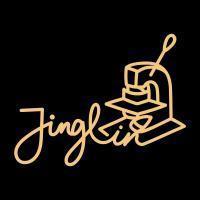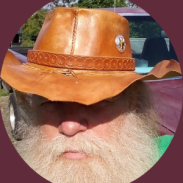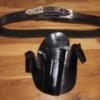All Activity
- Today
-
I have bought sample cowhide skins from mainly Samanta and Opera over the past few years, that I have then decided not to include in the range, and so would like to sell. They are lovely quality and would all have cost me approx £65 - £80 per m2 - I would sell those that are up to 1.5m for £50 a skin, and for above that size at £100 - plus shipping. If you would like more information / pictures etc, please contact me. zoe@peachybelts.co.uk sale leathers .pdf
-
New pistol, new holster
Samalan replied to Thadrick's topic in Gun Holsters, Rifle Slings and Knife Sheathes
Wow, that's a beauty! -
Boss says I might get a promotion before they put me in the old folks home. I trained for years at a desk job shoveling horse sh*t, never dreaming that I'd make the big show shoveling the real thing. This is better. Thanks, Jonas. The harness leather burnishes more easily than the HO bridle. I guess the waxes in the leather help the process. I can only blame myself for my previous stretchy belt. It was not heavy enough to stand up to the heat and humidity - was always damp. Thank you. I am all about sewing fixed loops and buckles on bridles, but I did manage to get some uneven stitches on this belt.
-
Nice job on those. I like the hand stitching just behind the buckle, and the edges are slicked nicely.
-
Great job Tom. Yesterday I tightened up the belt that came with the trousers and the buckle came off! I had to find my belt before I could go out.
-
Peachy Belts joined the community
-
I have some leather skins to sell and would like to put them on the leatherworker forum
-
It always amazes me when you guys take the time to educate us lower mortals and I thank you for it but what you describe is above my pay grade. I'm about to sell my flatbed because I have no room for it. I have no room for anything. I came from a 4bed house in London to a 2 bed bungalow in Kent. One of those bedrooms is my "shop" I have one 341 machine and I'm hoping that eventually I can fashion something that won't take much to change from normal sewing to a basic binder. If I have to change out a couple bits then so be it but this is still not much more than a hobby and I'm loving it but without a brand and the supermarkets selling handbags for £15/20 there's not much chance of making any money and that's fine as long as I'm enjoying it. Back to the binder, the leather that I used is 0.8mm and actually fed through easily. I have lots of that kind of leather in many colours so I'm hoping I can use it. Don't know if it will go through a double folder, we'll see. I will be buying some ready made stuff to see what works and what doesn't. After thinking about my problem above there's one more thing to try that should've been obvious, the vertical axis. If I lean the folder out slightly and re-adjust surely that will even out the amount on each side?? We'll surely find out. Thanks again guys for all your help as always.
-
Looking really good! You are exceptionally good at making those nice looking edges! Brgds Jonas
-
Mr.E Crafts joined the community
-
To use leather as edge binding, it should be as slippery as possible so it flows through the binder attachment. Glazed pigskin lining leather that Tandy Leather sells in the US and Canada comes to mind. It is very thin, usually under 2 ounces thickness, strong (I use it for wallet interiors and holster linings), and slippery on both sides. It would probably work well in a double-fold binder. Sometimes, getting leather to work in a folder attachment just doesn't work out as you hoped for. Here's a Plan B for you. I have a buddy nearby who makes high-end holsters, rifle slings, guitar straps and tooled belts. He manually installs thin lambskin edge binding on many of his projects by laying it flat on the outside, grain side against the outside edge of the project (grain to grain). He uses 1/4 inch wide double-sided leather tape to hold the lining to the project, along the very top. He bends and folds the lamb ski to follow the contours of the project, then sews it on just below the bottom of the double-sided basting tape. This ensures that the needle just misses the 1/4 inch sticky tape. After he has sewn the edge strip onto the project's from side, he applies another strip of tape to the visible bottom edge of the lining material, then pulls it up and over the top edge of the project. He pulls it tightly over the top and presses it down to the inside of the project. The edging on the back should hang below the stitch line done on the front side. The tape should hold it in place. Once he is satisfied with how the edging lays on both sides, he takes it back to his sewing machine and sew through the front side, just under the double-folded edge. This captures the longer piece that is folded over to the inside. He cuts the width of the edge leather so that is folds nicely and tightly on the front and hangs just far enough down on the back for the needle to capture it. A typical binding from him would have about 1/4 inch folded over on the front and 3/8 inch protruding on the back side. Sometimes, he uses precision scissors to trim the back side after it's sewn on. When the sewing is finished, the edges are double-folded on the outside and single folded on the back. The grain side is all the customer sees on either side. The above method may be unconventional, but his customers like it and haven't complained about it getting in the way, or coming apart. I believe that he uses about 2 ounce thickness lambskins as edge bindings. He doesn't need a binder at all. He uses his left toe presser foot on his Cobra Class 4 stitcher, with a #23 needle running either #138 or #207 bonded nylon thread. His machine has been modded with a narrow feed dog, with a smaller than stock hole, and matching throat plate to prevent soft leather from getting pushed down into the bottom feed parts. If you want to try using his system to apply lambskin edging, purchase quality skins that are as long as possible. Aim for about 1.5 minimum to 2 ounces maximum thickness. I buy the double-sided basting tape from Wawak.com. Other companies may carry a different brand that has a greater or lesser holding strength. Note, if you will be sewing through double-sided basting tape, use titanium coated needles with as large an eye as possible. Keep a small glass jar filled with Goof-Off nearby and use a small wool dauber to dip in into the liquid solvent. Rub the wet dauber over the needle every now and then to dissolve and remove any adhesive residue from the tape. Failure to clean the needle will result in the top thread sticking in the needle's rib and eye, leading to skipped stitches and ratted top thread.
-
How to Subscribe to Everything in a Single Forum
Johanna replied to friquant's topic in Computer Help
It looks like the particular topic you linked was transferred into the Sewing Machine Forum by Northmount at about 8:30 pm, because he thought it would get more specific attention from you sewing machine experts there. -
Go to Ebay . . . search for what you have . . . compare theirs with yours . . . and price accordingly. You will really not beat that way of doing it . . . for the price it costs you to do it. May God bless, Dwight
-

guide Pencil Hot Stamping Guide
Jinglin posted a blog entry in How Does a Hot Foil Stamping Machine Work?
Introduction Hot foil stamping on pencils is a unique way to turn everyday stationery into eye-catching, personalized gifts. With a metallic finish in gold, silver, or rose gold, even a simple wooden pencil can become a premium keepsake. This technique is widely used for corporate giveaways, school souvenirs, wedding favors, and brand promotions. Whether you are a stationery business owner, a leather & craft workshop, or a DIY enthusiast, this guide will walk you through the complete process of pencil foil stamping—From selecting the right hot foil stamping machine to tips for achieving a clean, long-lasting finish, we’ll cover every step in the process. Read on to discover how you can start creating custom foil-stamped pencils that stand out. What is Pencil Hot Foil Stamping? Hot foil stamping is a printing technique that uses heat and pressure to transfer metallic foil onto a surface. In pencil applications, the foil is applied to the curved surface of the pencil body, creating a shiny, durable design. Unlike flat leather or paper stamping, pencil foil stamping requires precision positioning because of the pencil’s small diameter and round shape. The key to success is using the right jig or holder to keep the pencil steady during stamping. Tools & Materials Needed To start stamping pencils, you will need: Mini Hot Foil Stamping Machine – A compact model with adjustable temperature and pressure (ideal for small cylindrical objects). Brass Letter Stamps or Custom Brass Logo Dies – For names, initials, or brand logos. Stamping Foil – Gold, silver, rose gold, or custom colors suitable for wood and lacquer surfaces. Pencil Holder – Ensures the pencil stays in place and aligned during stamping. Heat-Resistant Gloves – For safe handling of heated parts. Step-by-Step Guide to Foil Stamping on Pencils 1. Design & Prepare the Stamp Decide on your design—this could be a name, logo, or special date. For the best results, use engraved brass letter stamps or a custom brass die. 2. Set Up the Machine Set the temperature between 100°C–130°C (adjust based on foil type and pencil surface). Adjust pressure to ensure firm contact without damaging the pencil. 3. Position the Pencil Place the pencil in a cylindrical holder or jig to keep it from rolling. Align the stamp with the exact position where you want the foil design to appear. 4. Apply Foil & Stamp Insert the foil between the stamp and the pencil. Apply pressure for 2–4 seconds to transfer the foil evenly. 5. Cooling & Inspection Let the pencil cool before removing it from the holder. Check the stamped area for complete foil coverage and sharp edges. Tips for Perfect Results Use high-quality foil to prevent peeling or fading. For lacquer-coated pencils, choose foil designed for coated or painted surfaces. Test on a sample pencil before doing bulk production. Keep the stamp clean to avoid unwanted marks. Creative Applications Personalized Gifts – Names or inspirational quotes. Wedding Favors – Couple’s initials and wedding date. Corporate Branding – Logo and slogan for promotional giveaways. School Events – Graduation year or school name. Common Questions and Solutions (User Pain Points) How to properly adjust temperature and pressure? It is recommended to start testing at a low temperature (around 100°C) and gradually increase to the ideal setting. Pressure should be sufficient to firmly adhere the foil but not so high as to leave indentations on the pencil body. How to avoid damaging the pencil surface or foil bubbling? For painted surfaces, use low-temperature foil and shorten the stamping time to prevent prolonged high heat exposure. Which foil is suitable for wooden or painted pencils? Wooden surfaces can use general-purpose foil, while painted surfaces require special coated surface foil for better adhesion. How to prevent the pencil from rolling during stamping? Use a dedicated cylindrical clamp or V-shaped groove worktable, and assist alignment with red laser positioning or ruler measurements before stamping. What to do if the stamping fails? Incomplete foil transfer → Increase pressure or extend stamping time. Blurred foil surface → Lower temperature or shorten stamping time. Fuzzy edges → Check if the mold surface is clean. Conclusion By mastering these steps and troubleshooting tips, you can achieve precise and flawless foil stamping on every pencil. Remember: slow adjustments, multiple tests, controlling temperature and pressure, and using proper fixtures—these four points are the key to success. - Yesterday
-
ptochman joined the community
-

How to Subscribe to Everything in a Single Forum
AlZilla replied to friquant's topic in Computer Help
Personally, I haven't a clue. Just go to the top and click "Activity", scroll through everything. -
Is following a subforum expected to be reliable? A month or so ago I set myself as following the Leather Sewing Machines subforum. Since then I've only been reading things I see notifications for, which I assumed would be all the new posts in that subforum, plus replies to things I've replied to. Today I stumbled upon some new posts in the same subforum that I had not seen and that did not show up in my notifications. Example post that I did not receive a notification for: https://leatherworker.net/forum/topic/131587-binding-attachment-from-china/ That was posted on Thursday. Here is a screenshot of my notifications for thursday @Johanna for visibility
-
I hand stitch everything. That said, maybe the tension is set right but the leather thickness/density is slightly inconsistent.
-
henle joined the community
-
My suggestion would be to cut your teeth using a flatbed machine with a standard inline Single fold binder attachment and Double fold binder attachment then experiment doing the edging on various scrap cloth and leather. For this you can buy inexpensive binding attachments off Amazon for about $10 to $15 and you will not need to change the feed dog or presser foot or the needle plate. Size your folder based on the width of the finish tape size you need. Example: 10mm fold over i) you need a 20mm tape and a Single fold binder attachment tape to get you approximately 10 mm fold over on fabric (depending on thickness of fabric)with a raw edge. ii) you need a 40mm tape and Double fold binder attachment tape to get you approximately 10 mm fold over on fabric (depending on thickness of fabric)with a raw edge. The most important thing I can say is make sure that the material you are trying to edge stays snug up against the tape in the folder and the space between the needle / presser foot and the edge of the binder is keep to a minimum. Slow sewing to maintain contact in the binding attachment will help prevent binding tape wonder. I have a set of the 90 degree binder attachments that I never use. I use the inline style (Single & Double fold ) binding attachments (1/4" to 3 1/2") on both my flatbeds and cylinder arm machines. For what I do I never have found the need to change the feed dog or needle plate to do binding on a cylinder arm. As a note: The main advantage a 90 degree binder attachment has over the inline is the ability to do tighter turns. kgg
-
Pictures, front and back, are definitely needed. Some of that old gun leather can be worth a few bucks, more often under $40. @Rednichols hasn't been here in quite a while, but maybe this tag will send him an email and he'll chime in. Need to get pics up soon! If Red happens by, he'll know exactly what you have.
-
Bella1 joined the community
-
I'm lost, need some advice I have several gun holsters different names different designs, example: Police special Lewis 38 4 blk leather holster - Bucheimer, speed loaders etc, I am wanting to sell as my father left me these, he passed away in 2021 and worked Sheriff's Dept. and I'm ready to let some of them go but not sure where to look as far as pricing, can someone give me advice..? I don't want to just post and guess at pricing. Thanks in advance
-
quitpanda joined the community
-
Being a complete novice I wasn't even sure if it was ok to use other than leather on leather handbags. In my head I was picturing a double fold with nice turned edges but in my experimenting but I'm realising how many variables there are including single/double, material, size, thickness of the material being binded and probably more. I won't be doing enough to warrant a dedicated set up but with a few pointers and plenty of trial and error I'll end up with something usable. I do have roll of bigger synthetic gold stuff that I'll probably never use but I can see where being stiffer with sharper edges will allow it to go through a folder with more control than a piece of soft chrome tan.
-
Sean had long heard the story of a family tradition. It seems that his father, grandfather and great-grandfather had all been able to walk on water on their 18th birthday. On that day, they would walk across the lake to their local pub for their first legal drink. So, when Sean's 18th birthday arrive, he and his friend Mick took a boat, rowed out into the middle of the lake, and Sean stepped out of the boat. He immediately sank, and nearly drowned. He was only save by Mick, who managed to pull him back into the boat. Furious and confused, he went to see his grandmother and said, "Gran, 'tis my 18th birthday. So why can't I walk across the water like me father, me grandfather and his father before him? Gran looked at him with kind, benevolent eyes and said, "Because they were all born in January when the lake was frozen over. You were born in August, ye feckin' idiot!"
-
The folder is 18mm, I cut the chrome tan leather at 18mm. It's a sufficient thickness to give decent tension and all went smoothly but on the back side there was far less coverage and in places the stitches don't even touch the leather. I've got the folder as horizontal as I can get it so maybe there are folders and there are folders? Having said that almost all the folders I'm seeing are a lot more triangular (especially the double folders) so I can't see how they can lay horizontally so the answer may lay elsewhere. I will persevere.
-

Anyone taken a cheap servo motor apart?
AlZilla replied to AlZilla's topic in Leather Sewing Machines
I still need to get pictures posted but I can report SUCCESS repairing this motor! I replaced both bearings and it sounds fine now. Very easy job with a small gear/bearing puller. The bearings seat against a stop on the shaft, so zero worry about getting them back in position. I'll say that getting the case back together correctly takes patience and a gentle touch. Each end is very tightly fitted to the case. It takes very gentle tapping to get them seated all the way and then slowly tightening the 4 screws on each end in a repeated cross pattern. I believe that part of my original noise was from the case being misaligned due to the beating it took in transit. I wouldn't hesitate to do this job again. -
I think some closer up pictures of that machine would be interesting. The text on the first pic didn't turn out well, but I think if you blow it up, there may be a walking foot back there
-
@toxo I went through a big fight with binder attachments before I got the one that worked for our applications. It was custom built for the job and the edge binding we picked. The results was a perfectly placed double-folded edge bind on both sides. If you can't find someone to build you a binder, choose the width based on the material you will be running through it. Decide if you want a single or double folded edge. Most binding material is either cloth or synthetic bias tape. If you want to use vinyl, consult Sailrite company in the USA. They make portable and industrial sewing machines for the boat trade and offer bias tapes and folders that work properly. They can probably set you up with attachments, platters and tapes that work.
-
Since we're talking about stitching, I wonder why a few random stitches on the lower part of the loop have bottom thread peeking through. But not the top part. I wonder if something on the machine is slightly misadjusted. Almost like the tension drops away for 1 stitch. Maybe something about making a sweep in one direction and not the other?








.png.8051f07052f9f31ccafcad1e689c93eb.png)
.png.043f15082a43644af037ff057e8a339a.png)